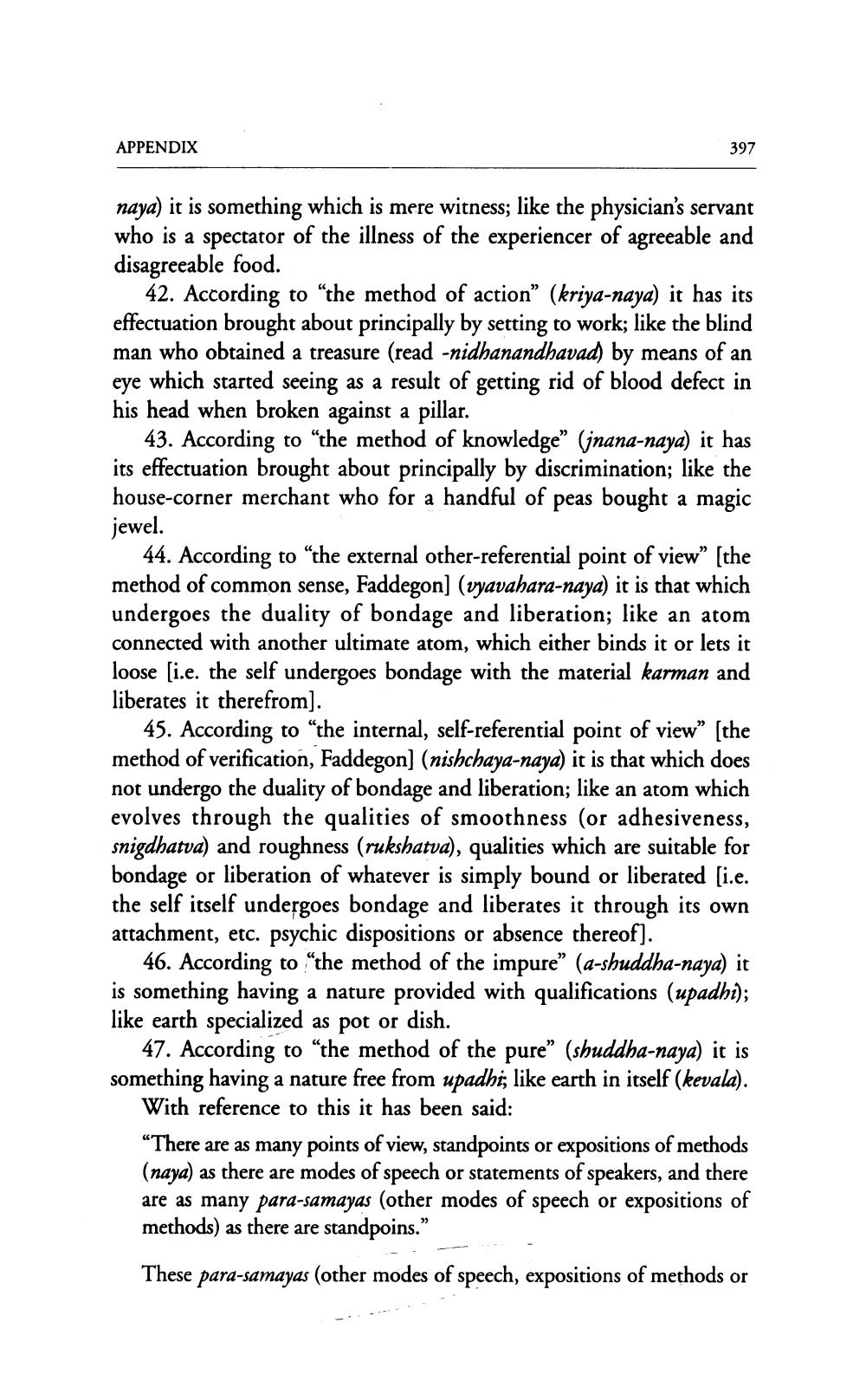________________
APPENDIX
397
naya) it is something which is mere witness; like the physician's servant who is a spectator of the illness of the experiencer of agreeable and disagreeable food.
42. According to "the method of action” (kriya-naya) it has its effectuation brought about principally by setting to work; like the blind man who obtained a treasure (read -nidhanandhavad) by means of an eye which started seeing as a result of getting rid of blood defect in his head when broken against a pillar.
43. According to the method of knowledge” (jnana-naya) it has its effectuation brought about principally by discrimination; like the house-corner merchant who for a handful of peas bought a magic jewel.
44. According to the external other-referential point of view” (the method of common sense, Faddegon] (vyavahara-naya) it is that which undergoes the duality of bondage and liberation; like an atom connected with another ultimate atom, which either binds it or lets it loose [i.e. the self undergoes bondage with the material karman and liberates it therefrom).
45. According to the internal, self-referential point of view” (the method of verification, Faddegon] (nishchaya-naya) it is that which does not undergo the duality of bondage and liberation; like an atom which evolves through the qualities of smoothness (or adhesiveness, snigdhatva) and roughness (rukshatva), qualities which are suitable for bondage or liberation of whatever is simply bound or liberated (i.e. the self itself undergoes bondage and liberates it through its own attachment, etc. psychic dispositions or absence thereof).
46. According to “the method of the impure” (a-shuddha-naya) it is something having a nature provided with qualifications (upadhi); like earth specialized as pot or dish.
47. According to “the method of the pure” (shuddha-naya) it is something having a nature free from upadhi; like earth in itself (kevala).
With reference to this it has been said: "There are as many points of view, standpoints or expositions of methods (naya) as there are modes of speech or statements of speakers, and there are as many para-samayas (other modes of speech or expositions of methods as there are standpoins."
These para-samayas (other modes of speech, expositions of methods or




